It’s official: I’m what some cyclists in the U.S. call a retro-grouch. The condition is characterized by a penchant for steel frames, wool, non-ergo anything and obsolete pedal systems. Shellacking cloth handlebar tape is a dead give-away. Despite being born during the cycling renaissance of the 70’s, I unfortunately spent all my time in the 80’s listening to pop bands instead of stockpiling lugged steel frames like I should have.
Anyway, after reading up on shellac and cloth bar wrap at Velo Orange, Bespoke & Wheel and Lovely Bicycle!, I decided to ignore all their advice and jump right in. No, I’m just kidding – I pretty much took most of their advice.
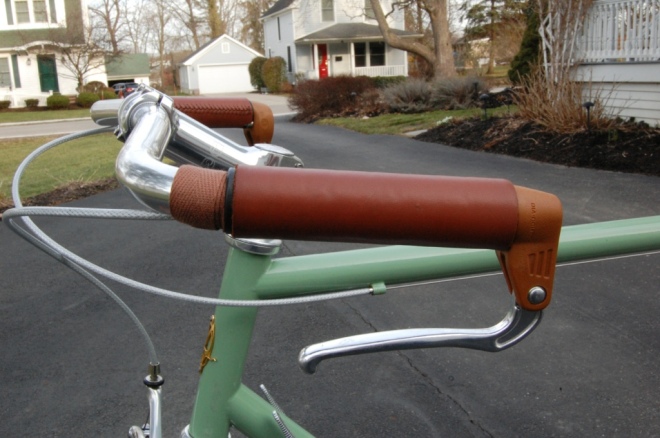
Above: before shellac, the brown cotton tape securing the inverse brake cable housings on my Ibis
Firstly, I’m not shellacking an entire bar, just some pieces of Tressostar cotton bar tape on my Ibis that I used to tie off the brake cables and wrap the kickstand. But I think the same principles apply, except that my shellac should last a lot longer than it would on a bar where it sees much heavier use.
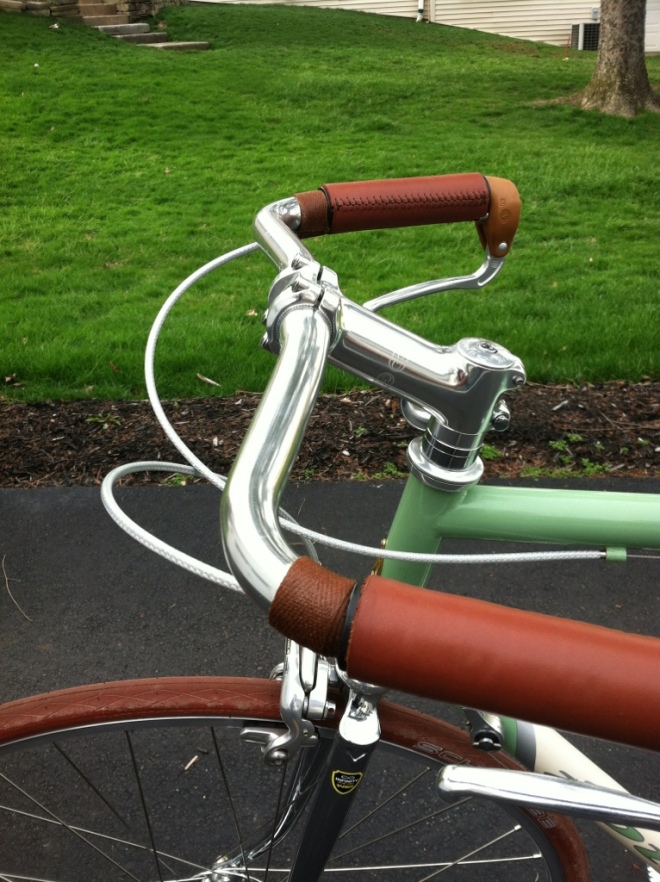
Above: after shellacking three coats (shellac is dry in this photo)
Next, I wasn’t about to dissolve solid shellac flakes. In fact, I wanted to even skip the brush and try shellac spray (which they do sell at hardware stores); luckily, I decided against that due to my problems with overspray and hatred of prep work. Then I realized that it’s impossible to find shellac in anything less than quart quantities. I tried three different places before I have up and ordered a 1/2 pint of amber Zinsser shellac from Amazon. I also opted to use disposable foam brushes, which I think worked out really well and allowed for better control.
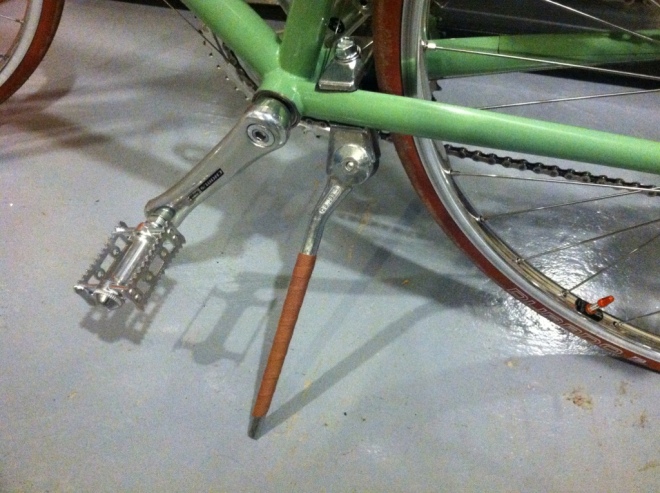
Above: wrapped kickstand before shellac
I applied three coats several hours apart. The shellac dried pretty quickly. The first coat really sucked up the shellac, but so did the second. Only the third coat really seemed like it was staying on the surface. I suppose that also depends on how thickly you wrap the tape. I used amber shellac to add some color, although the Velo Orange link above shows that sometimes the final color is more dependent on the tape color than anything. Three coats darkened up my brown tape nicely, though the first coat made the largest difference.
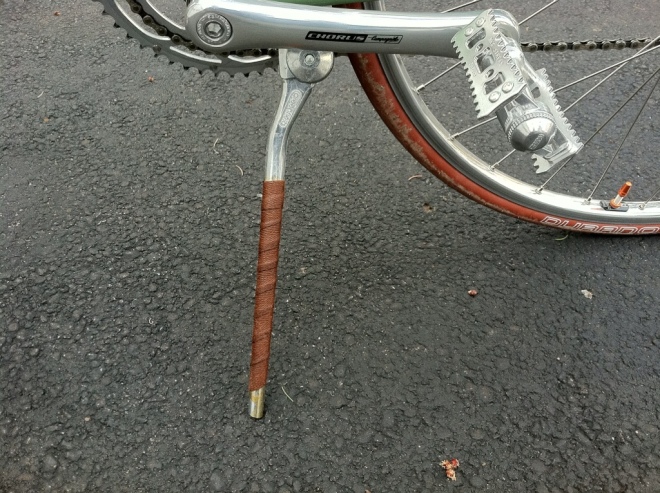
Above: kickstand with three coats of shellac (note the excess on the bottom of the kickstand – not yet cleaned up)

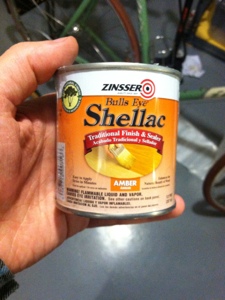
Hi Dave,
I found your site while searching for ideas on how to remove old cloth handlebar tape. I have an old bike I’m trying to fix up. Any thoughts on how to remove old tape that was pasted and shellaced on there back in the 70’s? Also, any ideas for removing rust spots from chrome?
Any help would be greatly appreciated!
Thanks!
Hi Nathan –
About any solvent should dissolve the shellac pretty readily – even water will dissolve it slowly over time. Velo Orange suggests using raw shellac flakes dissolved in denatured alcohol to make fresh shellac, so alcohol should also dissolve the dried shellac. If that doesn’t work then you could try mineral spirits, which will certainly work. Protect the rest of the bike when working with the solvents, including the tires.
I’m not much help with the chrome. Auto or motorcycle parts stores sell a chrome rejuvenator for very minor surface rusting; I you sand away as much rust as possible, being careful not to scratch the good chrome. Then apply the rejuvenator, which essentially dissolves the rust. The spot can then be polished with chrome polish, but it won’t be as shiny as the rest of the chrome. You then have to protect the area somehow. Motorcycles still use chromed parts, so talking to some guys at a motorcycle shop is your best bet.
Cheers,
Dave
To get rust spots off of chrome without damaging it, scrub at the spots with a bit of crumpled up aluminum foil. It’ll take some elbow grease but it won’t scratch at the chrome like sandpaper will.
Thanks for the tips! I’m going to give it a try this weekend.